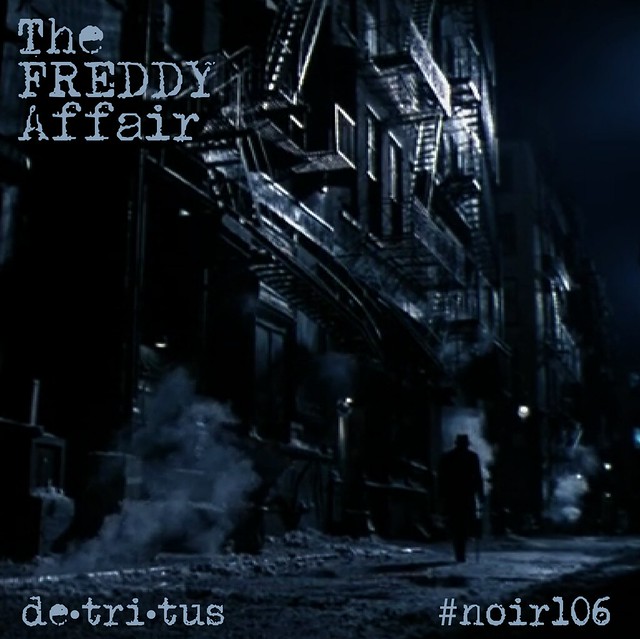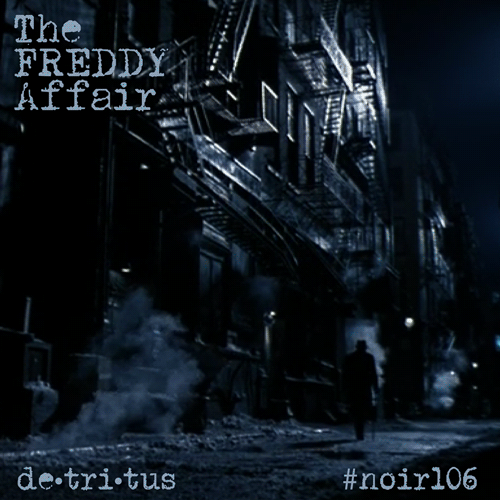
“The Freddy Affair,” by Andrew Forgrave, on Flickr
Paul Bond (@phb256, on Twitter) posted a request earlier today for some #noir106 bumpers for ds106radio. After a bit of messing around, I decided that this particular project needed a new voice, and so the narration was re-recorded (and slightly modified). We always tend to be hyper-critical of our own recorded voices when we hear them. Anyway, I’m pleased with the result.
The Audio
The text evolved in conjunction with successive listens-and-speaks as I tried to match the narrative flow with the phrasing in the music. After a couple of recording efforts using the wonderful, free, open source, cross-platform Audacity, I sourced a bit of ambient street sound from freesound.org to add at the beginning and the ending.
Street noise: “street short” by hoptenon on freesound.org (CC0 1.0)
Music track: “Pink Fish Signs V2″ by GeeNerve from the 2004 recording Suspense Dance Delights (CC BY-NC-SA 2.0)
Given that the backing music track is 0:57 in length, I was initially going for a 1-minute bumper. But in the final analysis, I decided that this might instead be better positioned as the initial episode of some kind of #noir106 radio short.
The Image
As I was pondering what to use for a graphic to accompany the audio track on Soundcloud, I decided to make use of a screen capture I had already collected. The image is from the opening credits of Alan Parker‘s 1987 film “Angel Heart,” starring Mickey Rourke as a down on his luck P.I. in post-WWII New York/New Orleans. (I’ll save my commentary on the film — and my GIFs — for another post.)

Opening Credit Scene from Angel Heart (1987) film by Alan Parker
I cropped the image to provide a 1:1 square album cover using the most interesting part, and then tried out a number of fonts found on fontspace.com.
I poked around with several before settling on DK P.I. which has a grunge-typewriter look — the kind you get from the P.I.’s busted-up typewriter after it’s been knocked off the desk and shot, four times too many.

You can see a number of different looks below that I tried before settling on the chosen font.

“The Freddy Affair font experiments,” animated GIF by @aforgrave
You can also see that I decided to change the title from “The Freddy Files” to “The Freddy Affair” during the album cover preparation.
The Process
In this post I’ve tried to model linking, embedding, attribution, and the process of sourcing and documenting visual, audio and font resources. I didn’t go into the details of using Audacity or Photoshop, but there is time enough for each of those in the coming weeks — by me or by others in the community.
Although this is perhaps a bit long for a #ds106radio bumper, it probably sells the #noir106 experience and invites the listener to tune in to #ds106radio in coming days — so I’ve also tagged it for Audio Assignment 36: Create a DS106Radio Bumper
Let me know if I’ve missed something!








